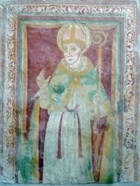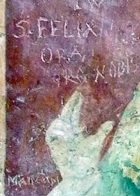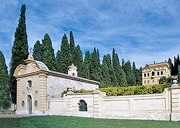
This small church (at the left in this illustration), which is in the grounds of Villa Fidelia, on part of the site of what was an important Roman Sanctuary below the walls of Spello.
-
✴The present church was built on the site of an older church (11th century ?).
-
✴Its foundations seem to date to the 4th century AD, and were probably those of the Templum Flaviae Gentis (Temple of Constantine’s Flavian dynasty), the dedication of which was permitted by the celebrated Rescript of Constantine (ca. 335 AD).
Medieval Church
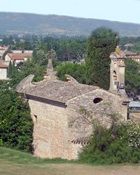
A church that was documented in 1406 as “ecclesiam S. Felicis” stood on a crossroads in this vicinity. This was probably on the site of the tabernacle that houses the Maestà di San Felice, which is at the extreme right in the photograph above and described below. However, Taddeo Donnola, the brother of Fausto and Prior of San Lorenzo, argued that San Fedele was actually the church in question, and that “Fedele” was a corruption of “Felice”. He published a monograph in 1620 entitled: “De loco martyrii sanctii Felicis episcopi spellatensis” (About the Place of Martyrdom of St Felix, Bishop of Spello), in which he identified San Fedele as the place of martyrdom of St Felix, and he placed an inscription (1644) on the facade of the church to that effect.
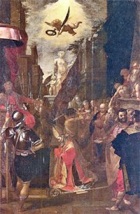
Maestà di San Felice (16th century)
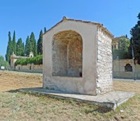
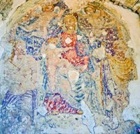
18th Century Church
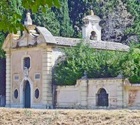
Decio Costanzi commissioned Cesare Bazzani to restore the facade and to incorporate it into a new perimeter wall of the villa in ca. 193o.
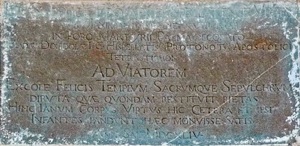
The inscription mentioned above, which claims this as the place of the martyrdom of St Felix, can be seen to the left on the facade.
Interior
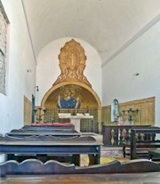
The decoration behind the altar, which includes an image of Christ Pantocrater, probably dates to the restoration of 1931.
Fresco (15th century)
